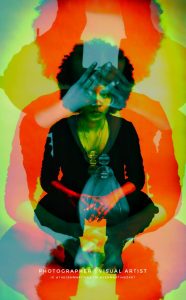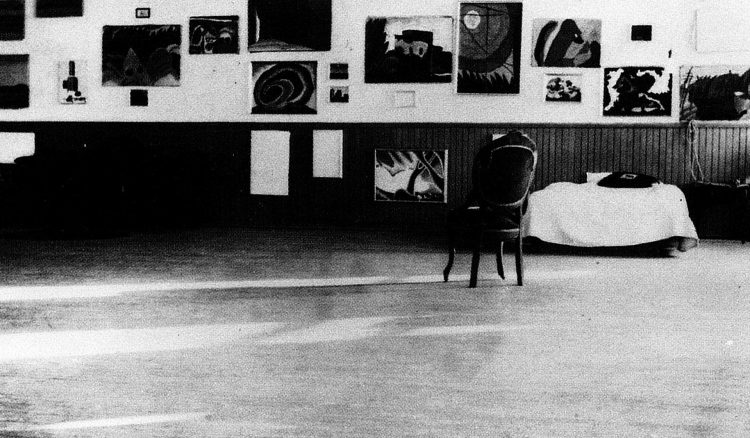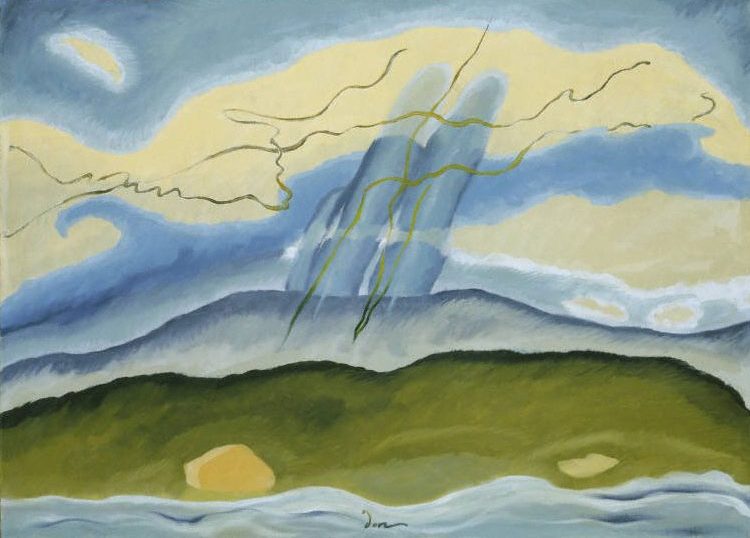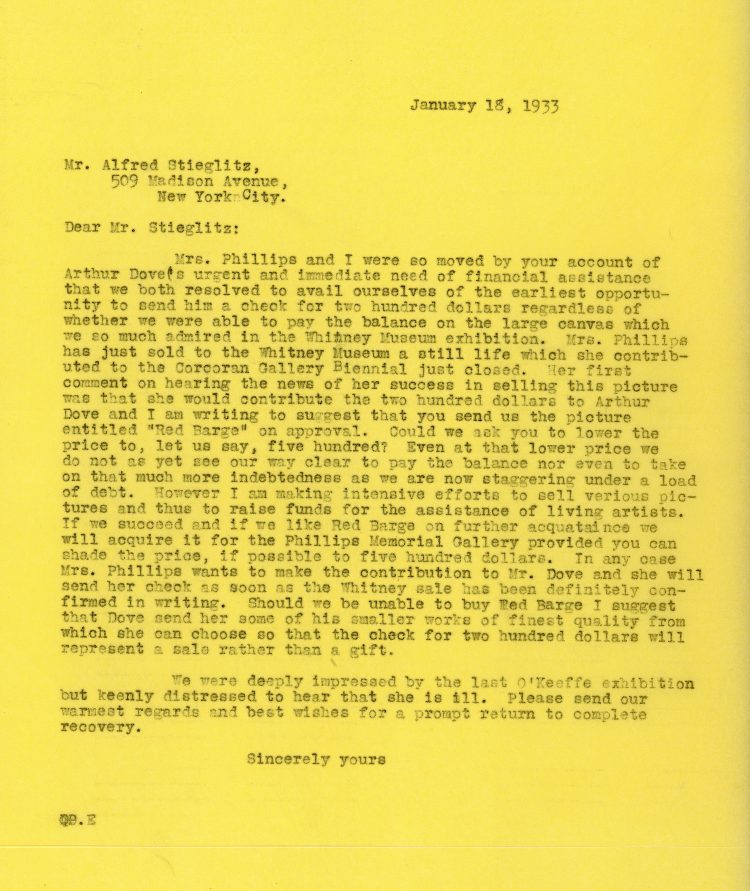Through correspondence in the Phillips archives, photographs, and more, the Reading Room exhibition Dear Dove, Dear Phillips, Dear Stieglitz explores the relationship between artist, patron, and gallery dealer.
Read THE EARLY YEARS, 1912-1933
Read THE GENEVA YEARS, 1933-1938
THE CENTERPORT YEARS, 1938-1946
In Centerport, Long Island, Dove and his wife again lived close to nature in a one-room cottage (formerly a post office) on stilts that was set on the edge of a tidal pond. During this period, Dove struggled with health problems, including pneumonia, heart attacks, and Bright’s disease, a kidney condition that prevented him from working as much as he had before. Despite his deteriorating health, he painted with renewed intensity, moving in a more abstract direction he called “pure painting” and working with themes that had preoccupied him over the course of his lifetime, such as the sun, moon, land, water, and sky. When Stieglitz died in July 1946, Dove wrote to Phillips that it was “a blow from which it will take a long time to recover.” Dove died in Centerport four months later. Phillips wrote a tribute to the gallery dealer in the Stieglitz Memorial Portfolio: “I think he knew we were allies in the same Cause; that we also had an ‘experiment station’ as well as an intimate gallery where art can be at home.”
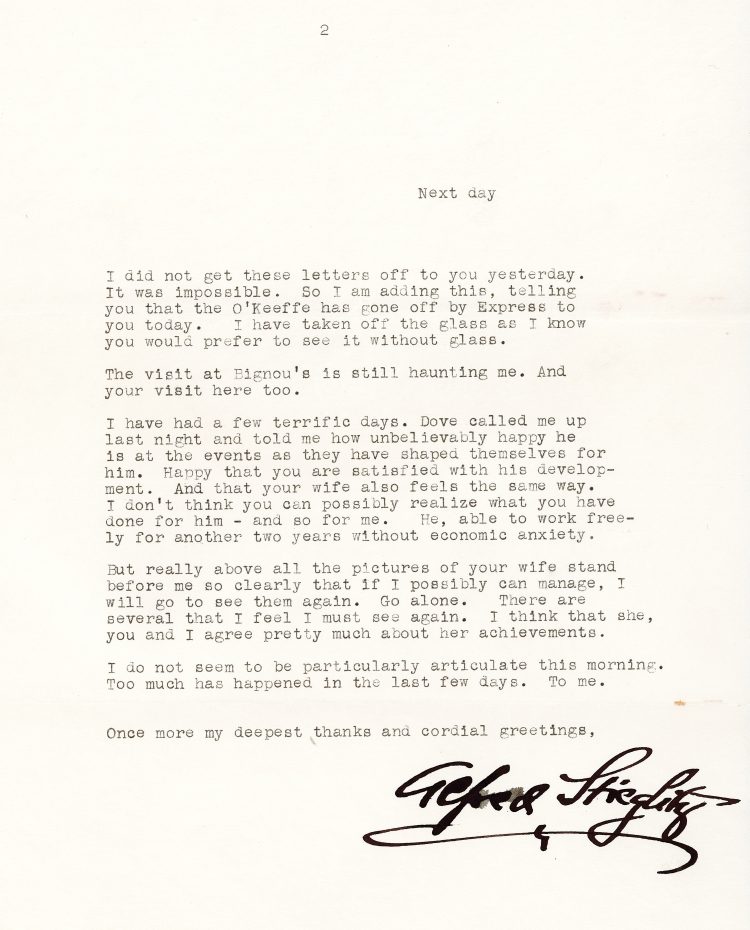
Alfred Stieglitz to Duncan Phillips, April 3, 1941
Stieglitz conveyed Dove’s happiness about Phillips’s continued sponsorship of his work at a critical moment in the artist’s career. Stieglitz wrote, “[Dove] is happy that you are satisfied with his development. And that your wife also feels the same way. I don’t think you can possibly realize what you have done for him—and so for me. He, able to work freely for another two years without economic anxiety.”
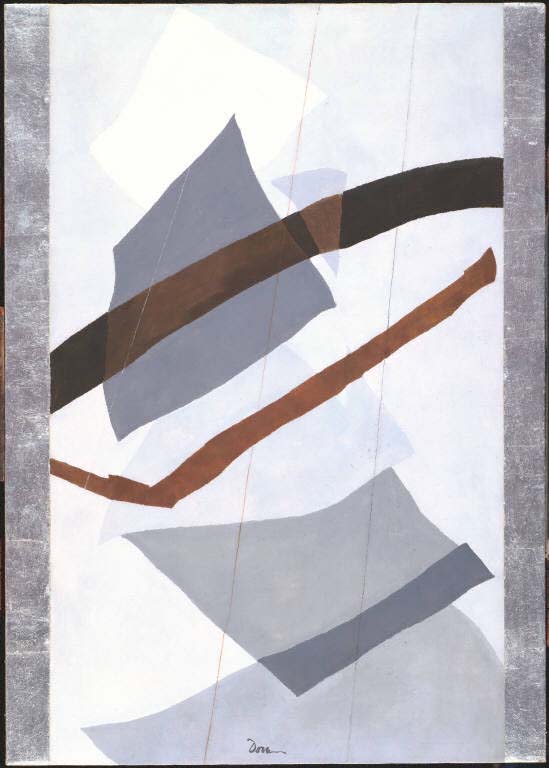
Arthur Dove, Rain or Snow, 1943, Oil and wax emulsion on canvas, 35 x 25 in., The Phillips Collection, Acquired 1943
Duncan Phillips acquired Rain or Snow in 1943, the same year it was painted. In his late work, Dove often used fewer, simpler shapes and a more limited range of colors. The diagonal brown strips may indicate branches and the thin lines likely represent streaks of rain, while the large rectangular shapes could be snowflakes. Two vertical stripes painted in silver on the edges of the painting suggest a window through which a winter storm is visible.
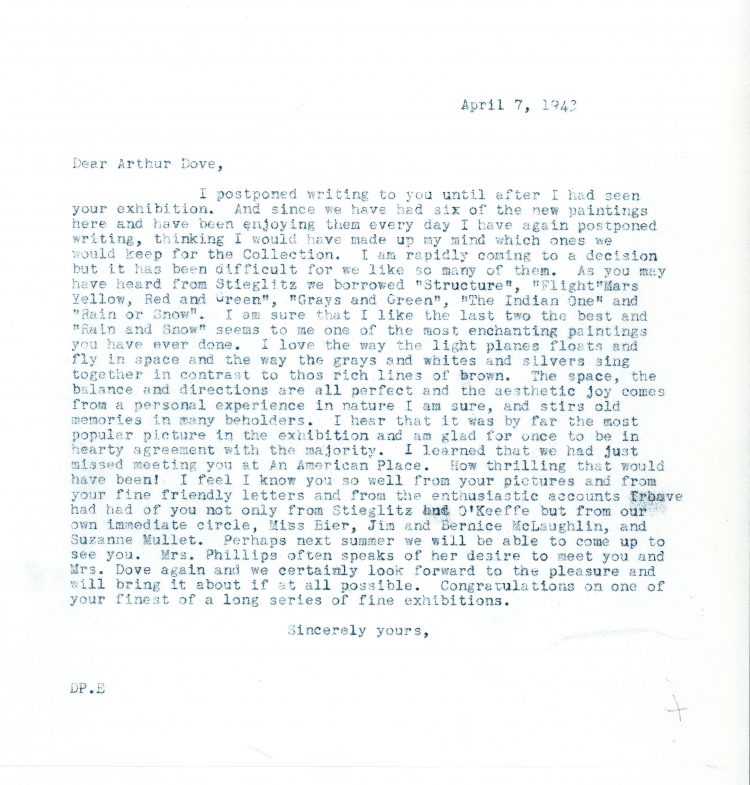
Duncan Phillips to Arthur Dove, April 7, 1942
Phillips wrote Dove, “Rain or Snow seems to me one of the most enchanting paintings you have ever done. I love the way the light planes float and fly in space and the way the grays and whites and silvers sing together in contrast to the rich lines of brown. The space, the balance, and directions are all perfect and the aesthetic joy comes from a personal experience in nature I am sure, and stirs old memories in many beholders. I hear that it was by far the most popular picture in the exhibition.”

Arthur Dove to Duncan and Marjorie Phillips, 1946
In this last letter Dove wrote to the Phillipses before his death, Dove expressed his appreciation for their support, telling them, “You have no idea what sending on those checks means to me at this time. After fighting for an idea all your life I realize that your backing has saved it for me and I want to thank you with all my heart and soul for what you have done.”
Visit the Phillips’s Reading Room (Sant Building, Lower Level 1) to see the full exhibition.
